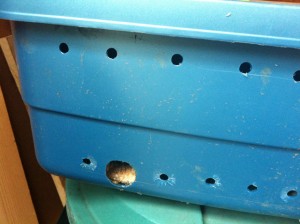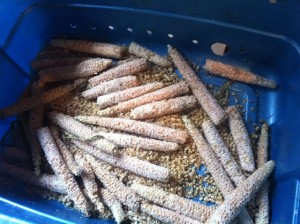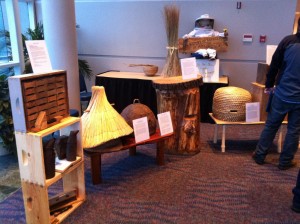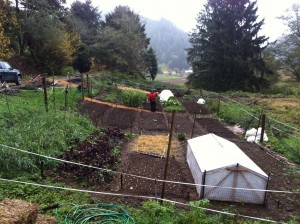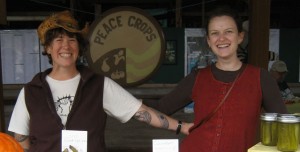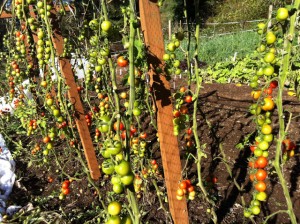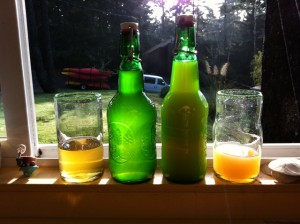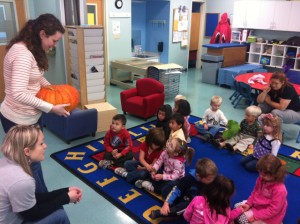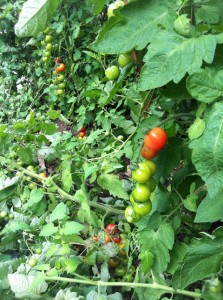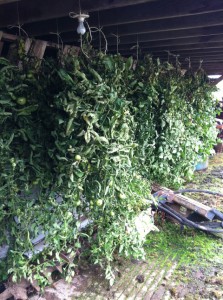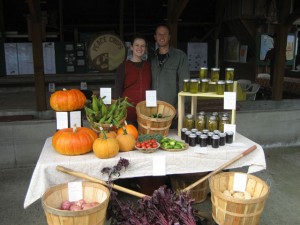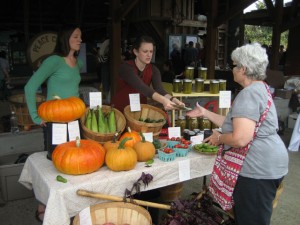 This one goes out to my Dad, who likes these kind of stories.
This one goes out to my Dad, who likes these kind of stories.
When Emily and I left the midwest to move out to Oregon and start our farm, my dad stopped me as I was packing, to talk about the family guns. You see, my grandpa and my dad were both avid hunters, and I am known to do a bit myself sometimes, so he wanted to discuss which if any I should take with me. Some, like the old Remington 870 shotgun, were obvious- it had been “mine” for over a decade, since Dad upgraded to a magnum model, and I always keep it with me because the ammo is cheap, it’s super reliable, and it’s good for just about any type of hunting. Since I was moving somewhere new, it didn’t seem prudent to take any others. Then I remembered and mentioned that Oregon is one of the states that allows hunters to use high powered rifles for deer. I expected dad to let me take the .348 Winchester as I had occasionally in the past, but he surprised me.
“You should take grandpa’s .30-06,” he shrugged. “It’s a good gun, and it’s probably killed some 30 deer.” Like I said, grandpa was an avid hunter. I’d never even shot it before, since it came into dad’s possession only after Grandpa died. I bought a hard case for it, threw it in the pickup with the rest of our belongings, and mostly forgot about it.
A few months ago, the subject of deer season came up. Emily is supportive of my occasional deer hunting forays, in part because she knows it means a lot to me to spend time in the woods with my dad, but also because she likes eating venison. It’s tasty, grass-fed, antibiotic-free, and as “free range” as you can get. We don’t eat a lot of meat, so the last time I got a deer, we didn’t buy beef for a year.
I looked up the game regulations and season dates online, and went out and bought a hunting license. This is a lot like gambling: you spend $50, and you don’t know if you will get a deer or not. Things have been tight around here lately, and Emily frowned when she heard how much I’d spent. Yes, permits for state residents are about a tenth of what they would have cost us if we didn’t live here, but that’s still a lot to bet on some venison.
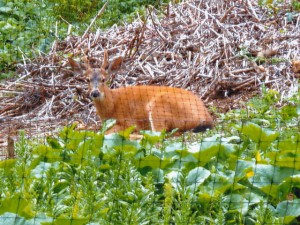 Days went by, and I suddenly realized that it was the week before Opening Day, and I’d still never shot grandpa’s rifle. I bought bullets, grabbed a cardboard box out of the recycle bin, and headed down to the farm. There is a great spot I noticed months before, a hollowed out stump atop a hill overlooking several acres of open field and treeline… a perfect deer shooting gallery. And the deer are known to frequent this area; I regularly find their poop around my garden, and Aunt Betty took this picture of one bedded down just 30 feet from the aforementioned stump (that’s my pumpkin patch in the foreground).
Days went by, and I suddenly realized that it was the week before Opening Day, and I’d still never shot grandpa’s rifle. I bought bullets, grabbed a cardboard box out of the recycle bin, and headed down to the farm. There is a great spot I noticed months before, a hollowed out stump atop a hill overlooking several acres of open field and treeline… a perfect deer shooting gallery. And the deer are known to frequent this area; I regularly find their poop around my garden, and Aunt Betty took this picture of one bedded down just 30 feet from the aforementioned stump (that’s my pumpkin patch in the foreground).
I paced off a hundred yards into the field, set down the box, and returned to the stump. As I loaded the old gun, a World War II surplus item, I wondered how off the scope was going to be, and how long it would take me to get it sighted in. I’m a fair shot (it tends to run in the family), but this gun was totally new to me. I cycled the action, took aim at a dot about the size of a quarter on the center of the box, and squeezed the trigger.
BLAM!
Yeah, it kicks, but not badly. The box remained as it was, so I looked through the scope again. Drat, no hole. The scope must be WAY off; the box was almost two feet wide. I sighed and walked out to the box to see if I could figure out what happened.
Imagine my excitement when I saw that I didn’t miss at all- I put the bullet right through the center of the box. Hoping it wasn’t luck, I went back to the stump and took five more shots, all of which were close enough together that you could cover them with a coffee mug. Nice rifle, grandpa! If Mr. Deer shows up, he’s going to be in big trouble.
Thus, this morning I found myself sitting in the dark against a tree, mostly hidden behind a hollowed-out stump. It was still dark, and even though it wasn’t raining, the mist was heavy in the valley and collecting on the branches of the hemlock above me, falling in sporadic drops on my head and shoulders. It wasn’t as cold as other places I’ve hunted, where the landscape was white from frost or snow, but I was glad to have the scarf and fingerless mittens Emily knit for me years ago.
One of the secrets of hunting is to get out there in the early darkness, so you can hide yourself and let the countryside return to quiet before the deer start moving. I really like this part of hunting, because sitting quietly in the woods as dawn breaks lets you catch a fleeting glimpse of how nature really is. It’s very peaceful.
So peaceful, in fact, that it often leads to napping. A hawk screeching brought me back awake, and I realized that the sun was up and not much was going on. There was no sign of any deer at all. Today is the next-to-last day of deer season, and was becoming a repeat of opening day, where I saw nothing except a few thin trails and scattered droppings. The last few weeks of deer season were busy with farm, work, life; now the season was coming to a close with my $50 deer tag still unused- and this was only the second time I’d gone out. I felt kind of bad about that, even though Emily is too considerate to ever chide me for wasting our money.
“Oh well,” I shrugged. Hunting is like that; sometimes you get nothing except a pretty walk in the woods. I stood up, stretched my cramped legs, and slung my rifle over my shoulder. The wind was coming from the south, a gentle breeze, but enough to carry my smell and make this location less-than-ideal for hunting deer to the north of me. I figure it was late enough now that most of the deer were bedded down for the day, but a little walk around the property would be a nice way to finish the hunt and get some air. A hike around the perimeter of the farm is a bit over two miles, through some gorgeous scenery.
As I walked, my mind wandered. I’d like to put in a jogging path some day around the farm, to get even more enjoyment out of the place. I crossed the brook by the bee hives, past the marsh, and into the lower field where Sturm and José are growing raspberries. There are some bare spots where the water damaged the crop, but for the most part they are growing pretty well. I walked along the rows, and stopped at a giant pile of elk poo. I didn’t get an elk license this year, and that’s just as well; I have no idea what to do with an 800-pound dead animal.
I eventually reached the extreme northern tip of the property, a pointy triangle of land where two barbed wire fences come together. I turned around to take in the entire 120-acre vista, surrounded by mountains on both sides and with mist rolling down the valley. My plan was to work my way south along the river (where I could hear salmon splish-splishing upstream) the entire length of the property with the wind in my face. It would be my best, and probably last, chance to come upon a deer by surprise from downwind.
I was suddenly brought out of my planning by a curious huffing sound right behind me. I turned around to find a pair of big deer leisurely trotting towards me, perhaps 40 feet away. The second one was grunting and bobbing his head up and down as he followed the first. In a state of disbelief, I counted four points on the rack of the grunting deer.
Still not really sure what to make of it, I clicked the safety off of my gun. “The regs said I could shoot any buck with a forked antler,” I though. “What is this moron doing trotting right up to me?” Without thinking, I shouldered my rifle, realizing that if I tell this story without having taken a shot, I’ll feel like the moron. By this point, the pair were about 20 feet away.
This is when I realized I had a problem. The magnification on the scope was such that I couldn’t take aim. The deer was too close! The last deer I took was with a shotgun with open sights, and the one before that was with a scope, but at about 200 yards. I frowned, ducking my head left and right to try to see around the scope, but on a 50-year-old gun, there aren’t view-through scope mounts. Giving up on that idea, I looked back through the useless scope. By now, the deer were trotting away from me to the left and starting to bounce, but still too close. I saw the scope completely filled with:
grass
fur
grass
leaves
grass
fur
grass
shoulderblade BANG!!
Without even thinking, as soon as I saw the sweet spot, I had pulled the trigger. I lowered the gun in disbelief; the deer was not even 50 feet away. It turned slightly to trot directly away from me, and I noticed a Monty Python-esque hose of gore blasting out of his right side. I guess I hit him.
At this point, I was still in a state of shock. I absentmindedly ejected the shell, put in a new one, and set the safety. What now? I’ve read that you’re supposed to wait a bit, so the deer can go lay down somewhere nearby and bleed out. After about 10 seconds of that, I remembered the graphic image of the gore pouring out of the deer, and realized that he wouldn’t be going far. I slung my rifle again, and walked over in the direction he’d gone.
I’d also read that you’re supposed to look for a blood trail. Would I be able to find it? It had just started raining, and things would start washing away. I soon realized that this fear was completely misplaced: not only did it look like he lost a full gallon where I hit him, there was actually a gobbet of flesh there as well. Standing over this mess, I looked up in the direction he’d gone, and there he was, collapsed about 20 feet away.
About this time, I remembered another important hunting lesson my dad shared with me. I approached the deer cautiously… and kicked him right in the ass! Legend has it that my grandpa neglected to do this once, and when he went to gut the deer, it jumped up and chased him around for a bit. This one seemed to be nonresponsive, though, so I thanked him for giving his life so that my family might eat him, and I went back to get the truck.
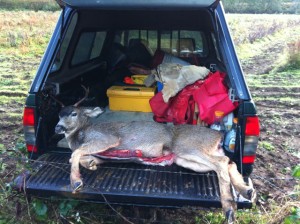 The rest of the morning was pretty procedural, in a homesteader-frontiersman sort of way. I locked the hubs on my 4×4, narrowly avoided getting stuck in some REALLY muddy fields, and was able to haul out the deer. Although I’ve helped my dad gut a deer twice, I’d never done it by myself, and I was a little nervous about it. So much so, in fact, that I bought a book (Basic Butchering of Livestock and Game), thus adding even more to the $50 already spent. More than the book or my experience with dad, though, what was mostly relevant was my Peace Corps experiences helping my neighbors slaughter and butcher livestock in Guatemala. Who knew?
The rest of the morning was pretty procedural, in a homesteader-frontiersman sort of way. I locked the hubs on my 4×4, narrowly avoided getting stuck in some REALLY muddy fields, and was able to haul out the deer. Although I’ve helped my dad gut a deer twice, I’d never done it by myself, and I was a little nervous about it. So much so, in fact, that I bought a book (Basic Butchering of Livestock and Game), thus adding even more to the $50 already spent. More than the book or my experience with dad, though, what was mostly relevant was my Peace Corps experiences helping my neighbors slaughter and butcher livestock in Guatemala. Who knew?
While gutting the deer, I discovered that my shot had been about perfect- right through the heart. The deer is now hanging in Farmer Ned’s hay barn, curing in the chill air. He and José helped me string it up, and even offered me the use of their freezer. Incredible though it may sound, there is a full-size freezer plugged in and running, right in the middle of the otherwise empty barn. José told me that Sturm had it ready for elk season, but he didn’t get anything this year. I peeked inside, and all that’s in it right now is a half-open box of ice cream sandwiches.
This week is the one-year anniversary of us beginning our farm, and the deer is a great capstone to our first year of homesteading. We’ve harvested fruits, vegetables, honey, and now venison. I can’t wait to see what next year will bring.
Dad, grandpa’s rifle is now at 31.

